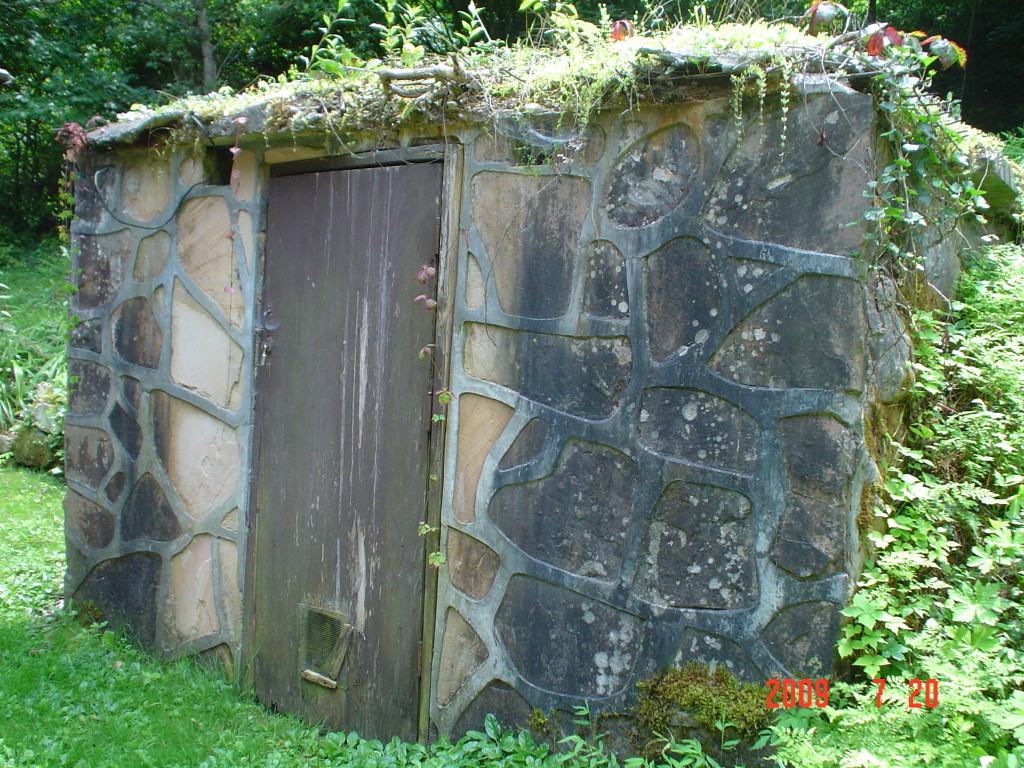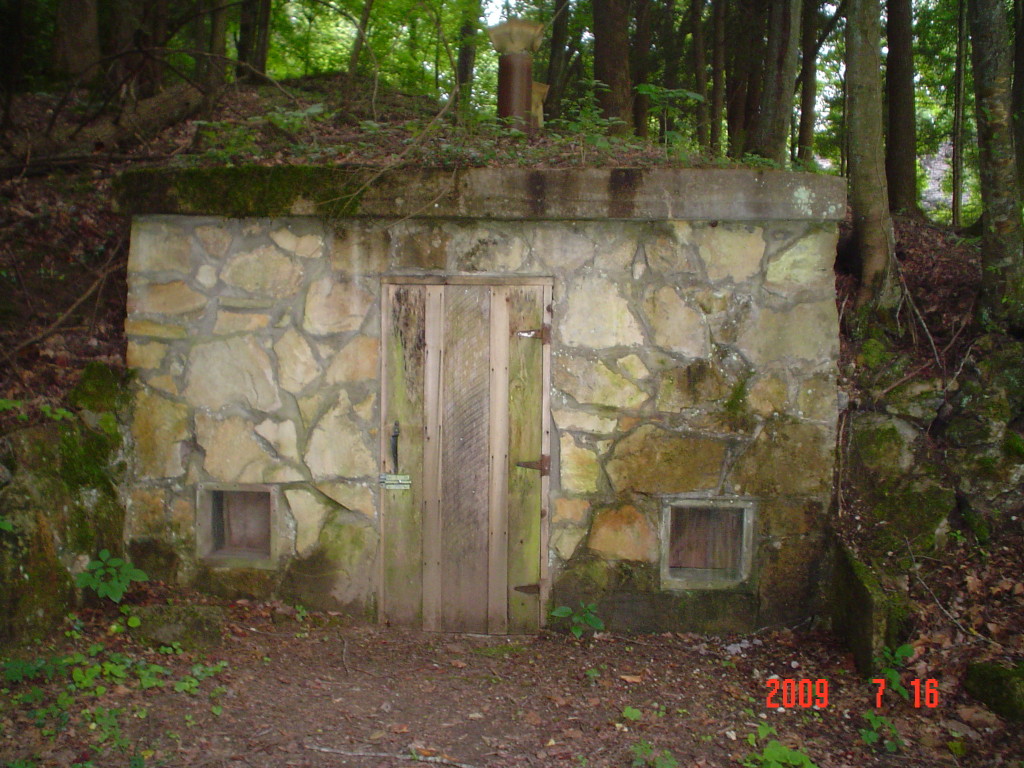Pine Mountain Settlement School
Series 10: BUILT ENVIRONMENT
Root Cellar (aka Vegetable Cellar)
1937 – present

Root Cellar, 2009. [rockwork_118_zande_rootcellar.jpg]
ROOT CELLAR or VEGETABLE CELLAR, 1937 – present
TAGS: root cellar, vegetable cellar, Arthur Dodd, storing winter root crops, Howard Burdine
In June of 1937, under the direction of the absent Director Glyn Morris, Interim Director Arthur Dodd, the School’s principal, took on several challenging construction tasks. One of those tasks was to supervise the reconstruction of a root cellar. The current storage for winter root crops had proved to be inadequate and Morris asked Dodd to “fix the vegetable cellar.” Morris had written to Ruth B. Gaines, a former housemother who had a keen interest in the farm that, “We had to put in a concrete roof on the new vegetable cellar, the old one not holding out water.”
Morris was away from the School and charged Dodd with the supervision of the “fix.” While the supervision of a construction job may seem far outside the scope of a school principal, Dodd took on the challenge with the help of the School’s farmer, Howard Burdine. On June 15, 1937, Dodd wrote to Glyn Morris:
The vegetable cellar is finished all except the bottom. A terrific amount of work has gone into that thing. I don’t believe you realized what it entailed when you said “fix the vegetable cellar” …. about 25 loads of gravel and sand, to Middlesboro for steel, all mixed by hand, walls poured in one day — 12 ft by 24 ft. But you will have a vegetable cellar that ought to pay for itself over a period of two or three years if it works properly. Now, Howard [Burdine] wants his shelves or boxes in by July 1st. We have decided that boxes are better from every point of view (they can be made as cheaply and will stand on each other to the ceiling) so unless you have some other plan we will proceed to make them. Inter-Mountain and Nolan are bidding on the lumber.
The root cellar replaced the traditional mountain method of storage which included burying the crops directly beneath soil and hay. Cabbage, one of the most common crops on the Pine Mountain farm, was often handled in this manner before the construction of the root cellar. However, the most efficient use of the cellar was for potatoes and even green tomatoes. The cool, dry, and steady temperature kept the crops from freezing in the winter and from the rot that accompanies moisture and high temperature.
Today (2015) the cellar still hides in the hillside beside Laurel House and continues to be an alternative space for root crop storage.

Root Cellar, 2009. [rockwork_031_picnicgrounds_root cellar]
Return To: BUILT ENVIRONMENT Guide
See Also: BUILT ENVIRONMENT

